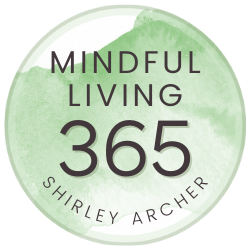THE REAL SECRET TO MAKING HABITS STICK FOR GOOD
How many times have you set a goal to start or keep up with a new exercise program? Does this happen fairly regularly every January?
As a fitness professional who was once a program director of group exercise classes, my job required me to plan annually for the January rush. I needed to ensure that our facility was offering enough programs and had enough equipment to meet new demand.
At the same time, I had to be creative. The reason: every February the “January rush” would end and class attendance would normalize. It was important not to overbuy equipment that would later go unused, but to have enough pieces on hand to meet the needs of every new participant. I’m very familiar with this cycle; I witnessed it annually for over 20 years.
Does this behavior pattern match yours? In other words, have you kicked off a new year with ambitious plans to follow a new training program only to fall into your same patterns by February? If yes, you are absolutely in the majority.
How do we stop this cycle? Interestingly, new findings in both health psychology and in neuroscience are lending insight into some of the reasons for why it’s hard to change a health behavior, like how physically active you are.
Three Truths About Habits
1. Habits are powerful.
Habits are essentially a brain shortcut. It would be overwhelming to go through our day and have to think about every action that we take. Therefore, the mind creates patterns or sequences of behavior that become automatic.
For example, if you drive a particular route regularly, you may find yourself going there, even when you intended to go somewhere different on a particular day. The reason: your brain defaulted to habit.
2. Habits are stimulated by environmental cues.
Researchers define a habit as a “process whereby encountering a cue triggers an impulse to perform an action that has, through learning, became a learned response to the cue.” In the driving example, being in your car and heading on the road from your home at a particular time of day is a powerful cue to go to a destination that you drive to routinely.
This happens with many of our daily behaviors. You may sit in front of the TV at night and automatically enjoy your typical snack and drink. The behavior has become linked with watching TV from your favorite seat.
3. Conscious effort is required to unlearn a habit.
Since a habit is a learned behavior that is triggered by external cues, you must consciously employ additional energy, attention and focus, to change it. You must heighten your awareness, notice when you are being triggered to behave in a habitual way and consciously change your activity. As you can see, this requires effort!
The good news is that while changing a habit requires effort on your part, there are some techniques based on our understanding of the power of habit that we can use to actually behave in a way that is consistent with our long-term goals—in other words, replace a habit with goal-directed behavior.
Replace a Habit with Goal-Directed Behavior
1. Connect with your authentic desire.
Why do you really want to exercise more? How do you imagine your life will be better? Reasons that generally don’t work: my doctor told me, my partner is pressuring me. This is about connecting with why, in your heart of hearts, do you want to be more fit?
2. Visualize yourself at the fit level that you desire.
See yourself in a typical day, enjoying your life at the fitness level that you want to achieve. What are you doing? Where are you? What are you wearing? How do you feel about yourself? Bring this visualization to life as completely as possible.
3. Identify the physical activities that bring you joy.
Connect with the memories of times you have been active and you felt really happy. What were you doing? Were you inside or outside? Who were you with? What did you most enjoy about doing that activity? Here it helps to dig back into your earliest childhood memories.
4. Jot down a few specific activities you do daily or on most days of the week.
Here are some examples: get out of bed, take a shower, eat breakfast, start workday, have lunch, end workday, etc. Now select one of these daily habitual activities that occurs at a transition point in your day where you can add a minimum of 10-15 minutes of activity, more if possible. For example, I find time after I finish getting dressed but before I eat breakfast.
5. Hook that habitual activity with your new joyful movement choice.
This is a way to “anchor” your habit. You don’t have to do it every day if that’s too much for you, but decide in advance what days of the week. Here’s how to apply this. Let’s say your joyful movement is dancing to music. And, you choose to anchor it to getting dressed in the morning. Depending on what you prefer, you can then add 10 minutes of dancing either immediately before or after you get dressed. You can start with 2 days a week, 3 is better, and work your way up to more days.
6. Do it.
Execute your plan without hesitation. Once you’ve decided your movement and your anchor, then you need to implement it. Our brain becomes fatigued when we spend too much time thinking, “Should I? Shouldn’t I?” Eliminate that conversation and simply do it. And, do it like a clock.
7. Continue for 6 weeks.
Studies show it takes 6 to 8 weeks to create a new habit. Keep at it, don’t overthink it, just do your plan. If you’re finding that you’re finding a reason to skip it, remind yourself of your visualization and WHY this is important to you. Remind yourself of the past goals that you have achieved, your success and how it made you feel.
8. Tell your friends and family.
Social support is one of the most important factors in changing a health behavior. Let all your supporters know your plan and help cheer you on. Keep them posted about your progress. Share your accomplishments!
9. Reward or punish yourself.
Some people are motivated by rewards, others are stimulated by dislike of a penalty. Know what motivates you. Promise yourself something great if you accomplish your goal each week. Or, if penalties work better for you, take something away that you want for each week, you don’t meet your goal.
These 9 tips are grounded in science. I’ve also used them myself. I’ve created a workbook to help you plan out your strategy for adding meditation into your day, but it works equally well for incorporating more movement. Click here for the download.
Now, you may be concerned that your initial goal doesn’t involve training three days a week at the gym for one hour. That’s because if you haven’t been active with a workout program, it’s hard to go from zero to 100.
It’s better to simply start getting more active with something you are 100% certain that you can achieve and then do it. Feel the success of your accomplishment. Then, set a new goal as regular activity and moving more becomes a comfortable part of your regular weekly routine. Let me know how it goes!
Visit my YouTube channel to subscribe for more tips. Have you downloaded Your Path to Peace? Go from stressed and anxious to calm and at ease in 5 simple steps.
If this post helped you, please share with friends now, by using the buttons below. Thanks!




